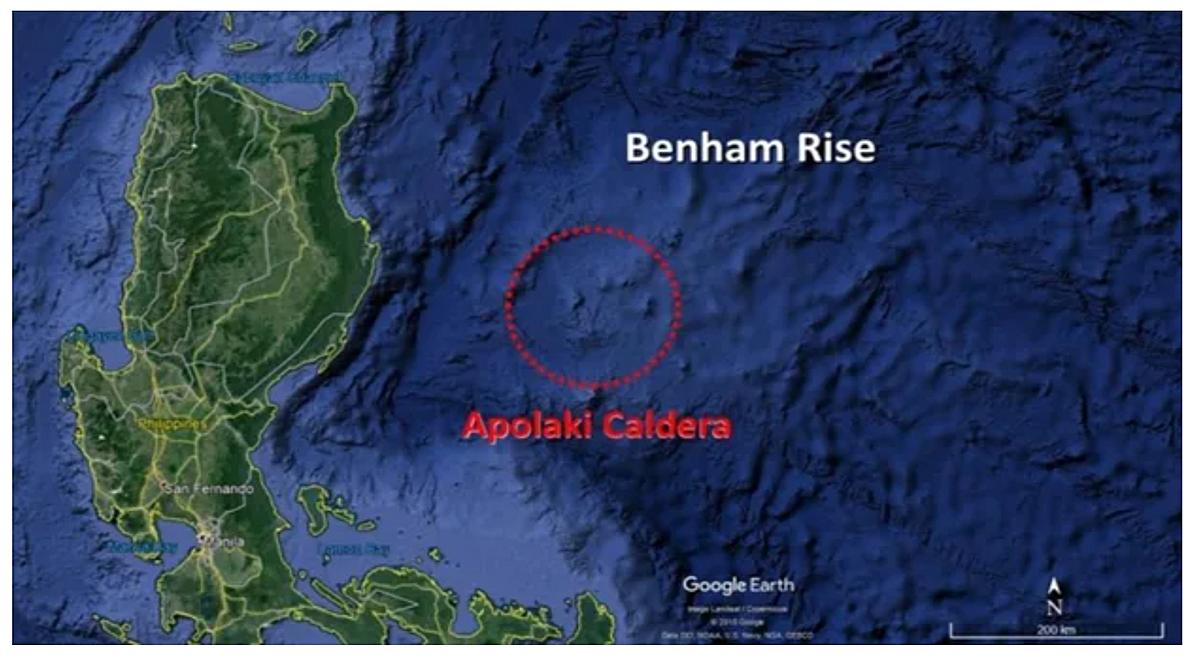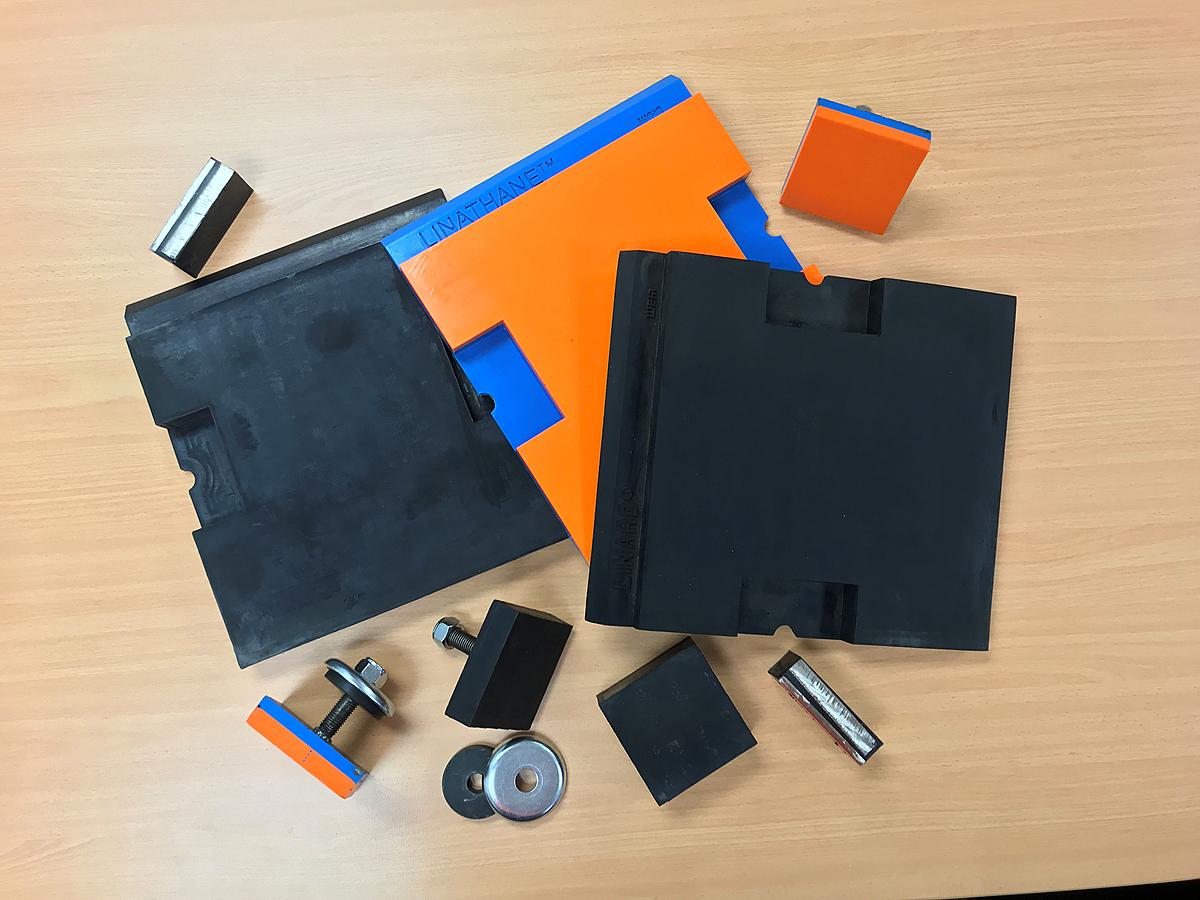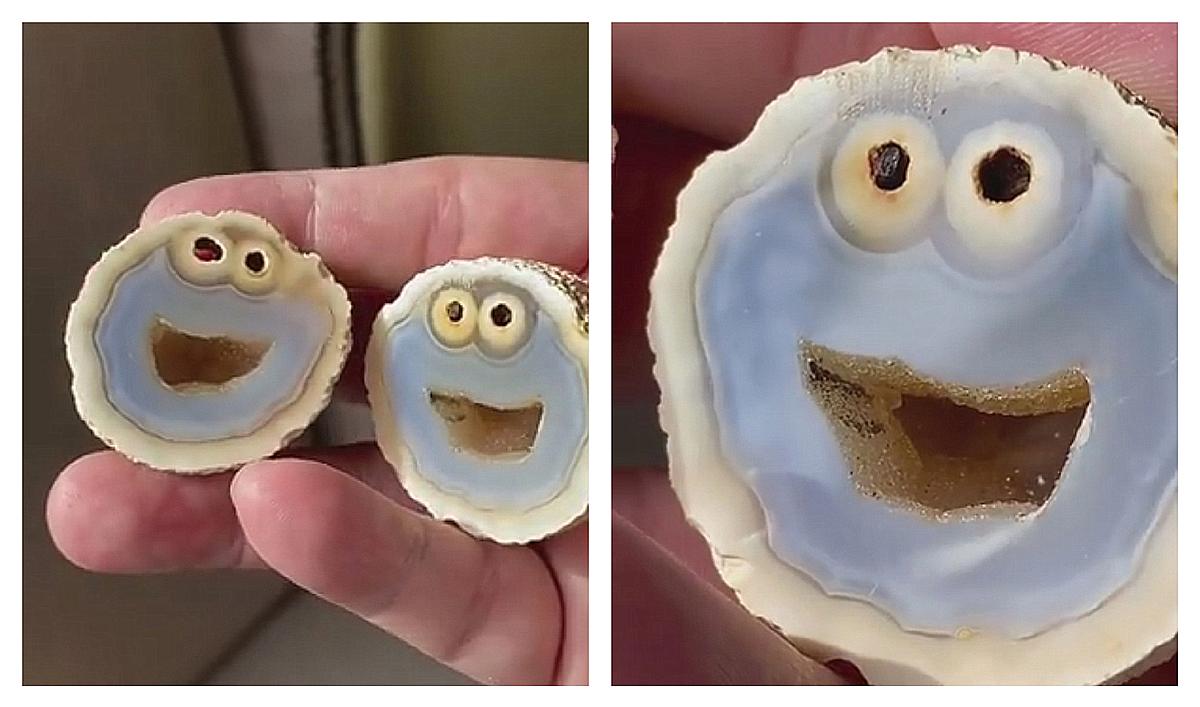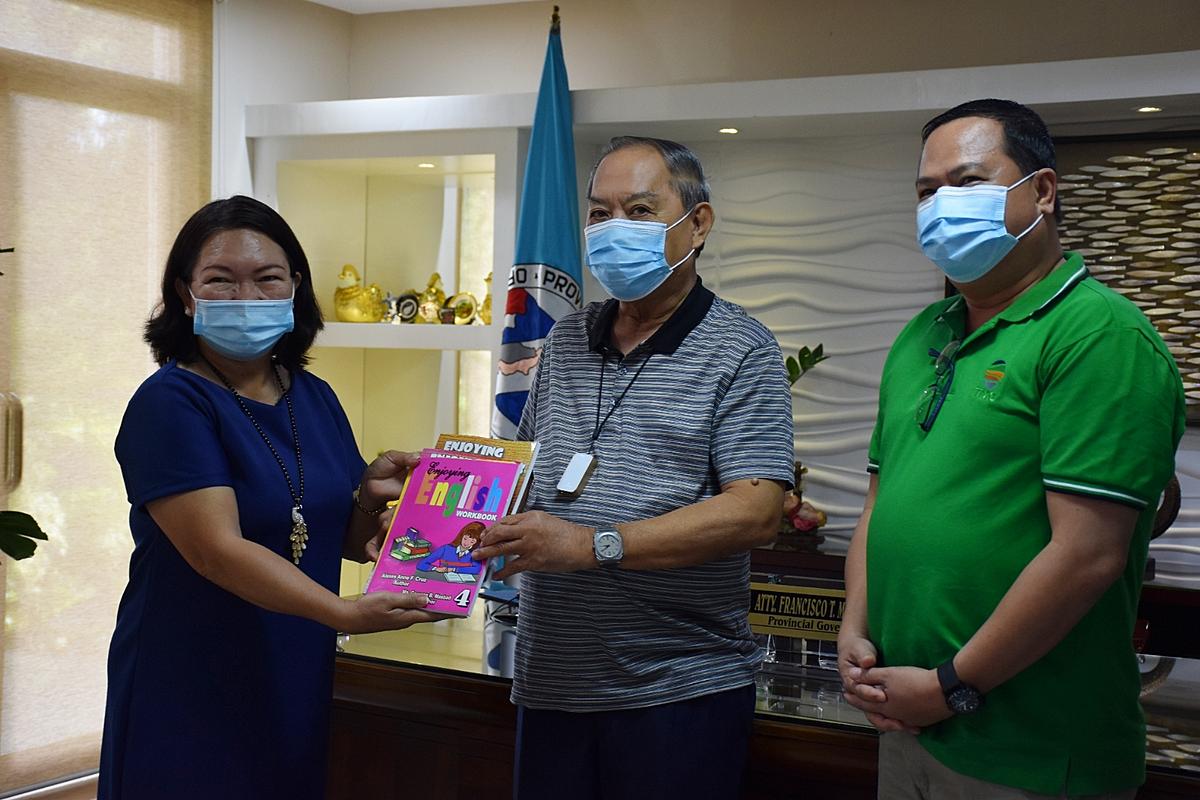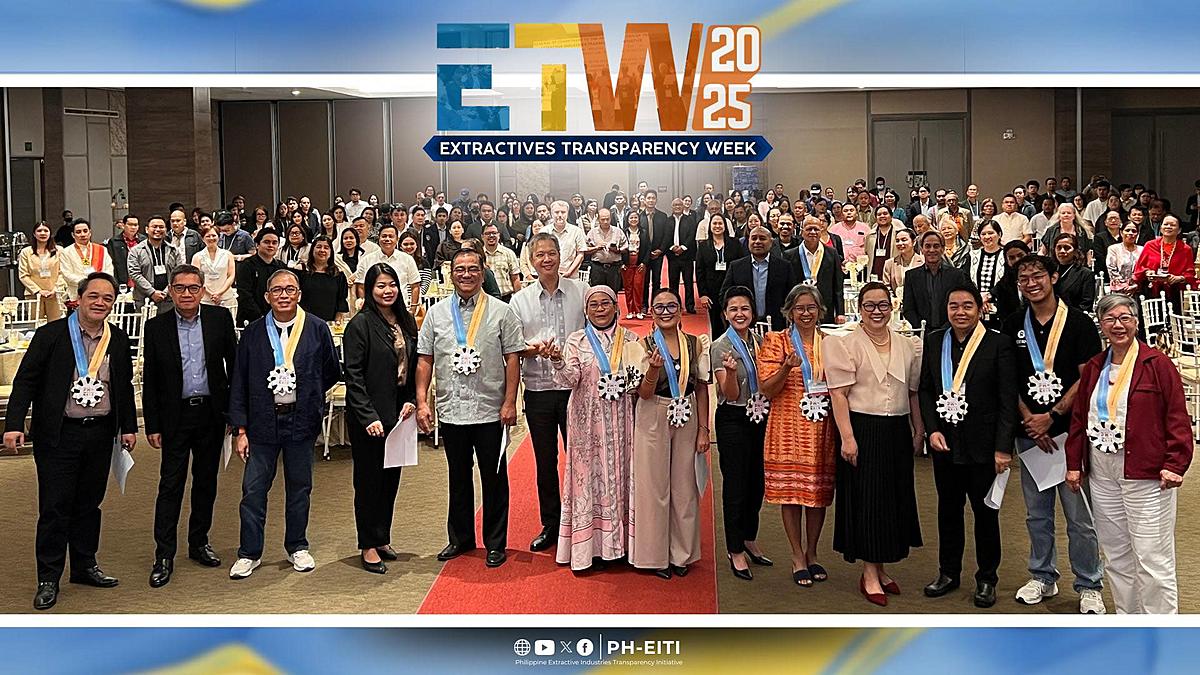The Apolaki Caldera is currently considered as the world's largest caldera. It was discovered in Benham Rise by marine geophysicist Jenny Anne Barretto and her team. Last June 5, 2020, an online talk show and forum in New Zealand titled "NetKapihan" had Ms Barretto as their special guest for their Philippine Independence Day special episode. The show's host and producer, Mr Rene "Nonoy" Molina also invited Marcelle Villegas, journalist of Philippine Resources Journal, as panelist for this live broadcast. Here is an exclusive interview with Ms Barretto and how she and her team came about with the discovery of the Apolaki Caldera during one of their expeditions.
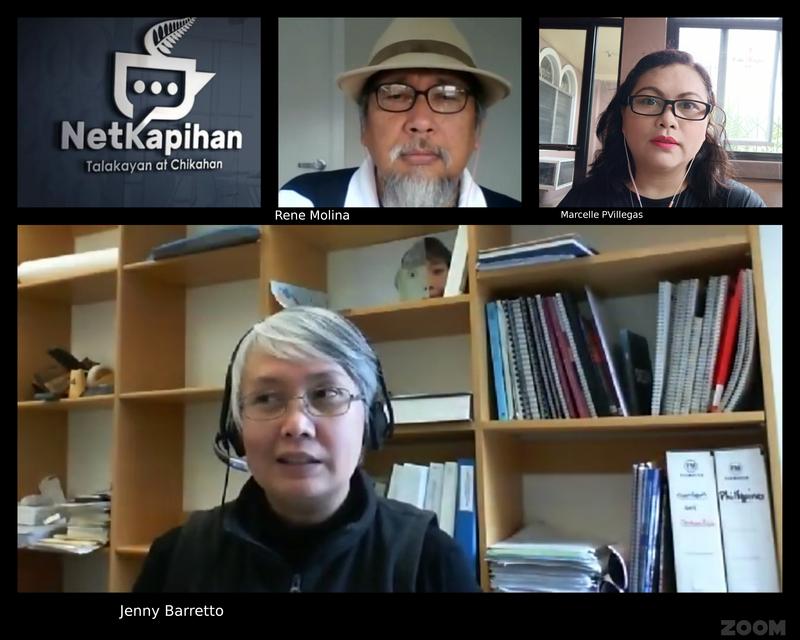
The fascinating discovery of the world's largest caldera in Benham Rise made headlines last year in October. Ms Jenny Anne Barretto is a Filipina geologist and marine geophysicist who works in GNS Science in New Zealand. She is a graduate of MSc Geology from the National Institute of Geological Sciences - University of the Philippines where she was also an instructor for five years. Since 2007, she has been assisting coastal States like the Philippines and the Sultanate Republic of Oman in delineating their continental shelves as defined in UNCLOS Article 76. She was a key scientist of the technical working group that successfully confirmed the continental shelf of the Philippines in the Benham Rise region. [1] In 2019, Ms Barretto and two colleagues published a paper in Marine Geology Journal where they reported the discovery of the largest caldera in the world. They named this the Apolaki Caldera, a tribute to the "god of sun and war" in Philippine mythology. (The Filipino word "Apolaki" means "giant lord".) This caldera has a diameter of ~150 km, which is 90 km bigger than the Yellowstone Caldera in Wyoming, U.S.A.
Ms Barretto’s paper, "Benham Rise unveiled: Morphology and structure of an Eocene large igneous province in the West Philippine Basin" provides the details of the morphology and formation of the underwater feature of the Apolaki Caldera. The paper is co-authored by her colleagues Mr Ray Wood and Dr John Milsom.
There are many notable Filipino achievers around the world and it is often customary in most events among overseas Filipino communities to honour them during Philippine Independence day every June 12 of the year. For this reason, Ms Barretto was featured as a special guest in New Zealand’s "NetKapihan" last June.
"NetKapihan" is an online talk show, forum and panel discussion that features the Filipino community in New Zealand. The show’s founder and producer is Mr Rene "Nonoy" Molina, a Filipino-Kiwi digital storyteller and filmmaker who is based in New Zealand.
Mr Molina stated, “It was one of the most memorable Philippine Independence Day celebrations I’ve ever had -- a tribute by NetKapihan to our 'Araw ng Kalayaan' via an exclusive info session with Filipino-Kiwi scientist Jenny Anne Barretto who was part of the team that discovered the Apolaki Caldera in Benham Rise! Many thanks too to Manila-based journalist and my former CSA-Makati student Marcelle Villegas for joining the info session. We are not a big organisation with limitless resources, neither are we a news-gathering company. We are a small, online talk show and we try our very best to be a trailblazer! That is our commitment with you! Mabuhay ang sambayanang Pilipino!”
Here is our interview with Ms Jenny Anne Barretto:
PRJ: From the beginning, what inspired you to pursue a career in geology and marine geophysics?
Ms Barretto: Like many children, I wanted to be an astronaut, dreaming of exploring and conducting experiments in space. I initially pursued a metallurgical engineering course in UP Diliman. But when I realized I didn’t like chemistry, I shifted to Geology which was quite popular in the university at that time because of the 1990 Luzon earthquake and 1991 Pinatubo eruption.
Working as a student assistant with the Zambales Lahar Scientific Monitoring Group and with UP NISMED’s Science Teacher Training Center inspired my early Geology career of simultaneous research and teaching at the UP National Institute of Geological Sciences.
The journey in marine geology and geophysics started when I participated in a JAMSTEC-led marine survey in the Philippine Sea back in 2000. Then in 2008 I became part of the NAMRIA-led Technical Working Group that prepared the continental shelf submission for the Benham Rise and Reed Bank-KIG regions. Among my tasks were to put together the data and arguments relating to morphology and geophysics of the said regions, so the Philippines can extend its continental shelf beyond 200 nautical miles.
PRJ: Please share with us how you and your team came about with the discovery of the Apolaki Caldera in Benham Rise.
Ms Barretto: My co-authors and I were part of the Benham Rise continental shelf technical working group. Back in 2008, we only analysed the bathymetric, geological and geophysical data for the purpose of proving that Benham Rise is part of the Philippine continental shelf. That is by showing that Benham Rise is physically connected to Luzon.
Then in 2014, I looked at the bathymetric data again and started describing the different features on Benham Rise in more detail. It was then that I noticed the caldera-like feature on the summit of the rise. But because of its enormous size (~150 km diameter) I was unsure. I showed the image to Ray Wood and he agreed that it looked like a caldera, but suggested to ask other scientists’ opinions, all of whom advised me to do more analyses before making any conclusion.
I went through all the data we have from 2008 and availed of other data in the public domain. Reading John Milsom’s previous interpretations of seismic and gravity data in Benham Rise, I realized that a way to explain the relatively thick pocket of sediments on the summit that he pointed out was the presence of a caldera.
So that began our work together to prove or disprove the presence of a giant caldera on Benham Rise.
PRJ: How long did you research and investigate on the caldera before the actual discovery and verification of its presence?
Ms Barretto: The research and writing the paper spanned 2014 - 2018. It took a while because it was not part of our jobs and we were working remotely from each other. I was in Lower Hutt, Ray was in Hawke’s Bay, and John was in Wales.
Then there was the paper review process of the Marine Geology Journal. There were three reviewers, who although agreed that the feature looked like a caldera, asked us to make the presentation of evidence more robust. The paper was finally published in October 2019.
PRJ: What are the possible mineral resources available in the area? Do you think our country may be able to extract or mine these minerals from that depth (>-2500m) with the mining technology we have available?
Ms Barretto: With the presence of the caldera, exploration geologists will say that the possible mineral resources are volcanogenic massive sulfide (VMS) deposits which are significant sources of metals (largely Cu, Zn, Pb, ± Au).
I believe the existing technology is for deep sea mining of seafloor massive sulfide (SMS) deposits and not VMS deposits. SMS deposits are the modern equivalent of the ancient VMS deposits. Since rock samples from Benham Rise returned ages between 35 to 38 million years and there is no known active volcanism on the rise and vicinity, it is most unlikely to find active hydrothermal vents or chimneys which are targets for mining SMS deposits.
PRJ: Is the existence of the large Apolaki Caldera still an interpretation of existing observations or may we assume it as a geological fact?
Ms Barretto: The available data supports our interpretation of the existence of the caldera. However, it is not impossible that other scientists or even us (me and my co-authors) may find later evidence refuting it. It’s just how science works.
--- To be continued ---
-----
Acknowledgement:
Thank you, Ms Jenny Anne Barretto and GNS Science, for this interview and for sharing with us your studies and discovery.
Thank you, Mr Rene Nonoy Molina of NetKapihan, for the opportunity to join the discussion with Ms Barretto.
Thank you, Dr Friedrich-Karl Bandelow who is my technical adviser for this interview.
Reference:
[1] Retrieved from Jenny Barretto’s LinkedIn page
[2] Yang, Angelica (22 October 2019). GMA News Online. "After Pinay marine geophysicist discovers world's largest caldera: What is a caldera and how does it form?". Retrieved from https://www.gmanetwork.com/news/scitech/science/712584/after-pinay-marine-geophysicist-discovers-world-s-largest-caldera-what-is-a-caldera-and-how-does-it-form/story/
Photo credits
[3] Benham Rise - by Google Earth and UP MSI Geological Oceanography Laboratory
[4] NetKapihan Zoom session, June 5, 2020 - by Rene Nonoy Molina and Marcelle Villegas
NetKapihan’s Facebook page is at http://www.netkapihan.com/

